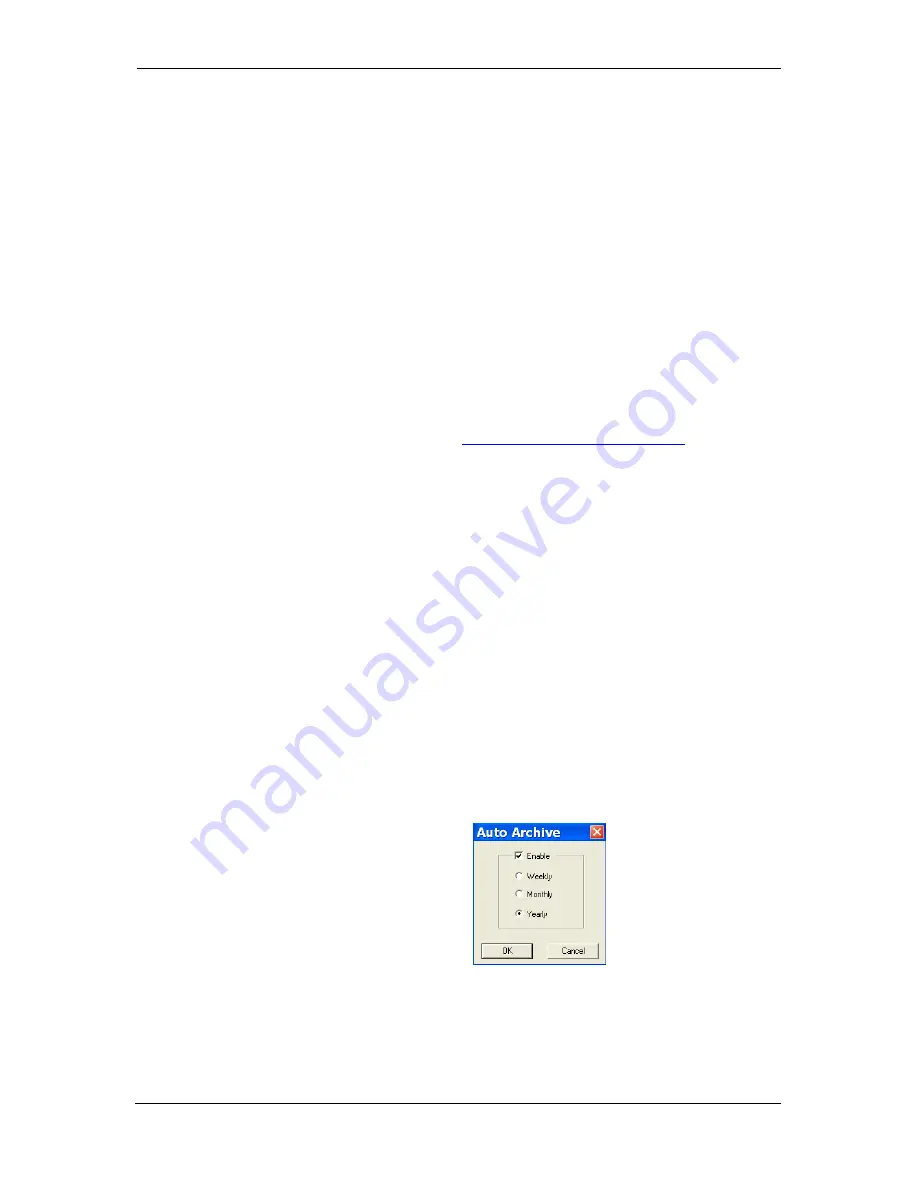
Chapter 8 Retrieving and Storing Files
Archiving Files
134
PM135 Powermeter Series
desired output file format, and then
click on
Save
.
6.
Repeat the same for all tables you
wish to be converted.
7.
Click
OK
.
Exporting Files in Excel Format
PAS allows you to convert data tables into the Microsoft Excel workbook
format, either manually, or automatically while retrieving data from your
meters via the Upload Scheduler.
To store files in Excel format, follow instructions in the previous section
and select
Excel Workbook
as the output file format.
The first row of the Excel table lists data names (see Appendix D) and the
second row provides data codes, which identify recorded data points (see
Modbus communications guide for data codes) that may be useful for
automated table processing.
Each table row is provided with the device identifier that you can define in
the meter database (see
Creating a New Site for your Meter
).
8.5
Archiving Files
Microsoft Access databases tend to grow fast. Databases above 0.5
Gigabytes can drastically slow down file operations.
To avoid enormous growing files, you can either periodically change the
target database, or use the Upload Scheduler’s file archiver to
automatically move older data to archives.
The Upload Scheduler archives files upon a weekly, monthly or yearly
schedule. When archiving data, a new database is created to where older
data from your present database with the expired archiving date is
moved.
An archive file keeps the original database name to which the date of the
oldest database record is added, so you can easily identify your archives
and work with them as you work with a regular database.
To provide a schedule for archiving files:
1.
When defining a schedule for
uploading files from your meter,
click on
Configure
or double click
on the site row.
2.
Click
Auto Archive
.
3.
Check the
Enable
box and select a
periodic schedule for archiving your
files for this site.
4.
Click
OK
.






























